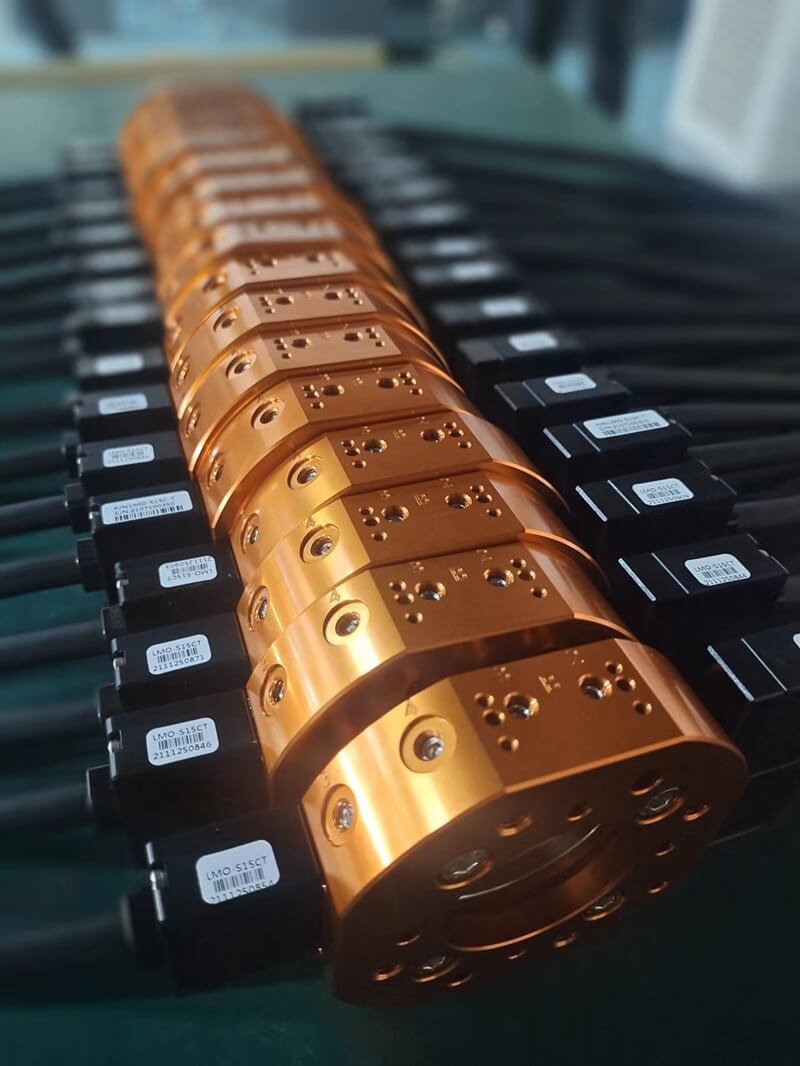The main plate of the robot quick-change device (also known as the robot side, mother plate, or R side) and the tool plate (also known as the tool side, father plate, or T side) play different roles and functions in an industrial robot system. Their main differences are as follows:
1. Installation Position and Role
Main Plate (Robot Side, Mother Plate):
- Installation Position: Usually installed at the front end of the robot arm, it is the main part of the quick-change system.
- Role: Acts as an intermediary between the robot and the tool plate, providing a stable interface and connection point, ensuring compatibility and a secure connection with various tool plates.
Tool Plate (Tool Side, Father Plate):
- Installation Position: Installed on the execution tool, such as welding clamps, grippers, etc.
- Role: Used to connect with the main plate, quickly changing different tool plates to meet various production needs, enhancing the flexibility and efficiency of the production line.
2. Design Characteristics
Main Plate (Robot Side, Mother Plate):
- Usually has standard interfaces and dimensions to be compatible with various tool plates.
- Equipped with interfaces for electrical, gas, and liquid media to connect and communicate with the tool plate.
- The design focuses on versatility, compact structure, and reliability to maintain stable performance during frequent tool plate changes.
Tool Plate (Tool Side, Father Plate):
- Also has standard interfaces and dimensions to be compatible with the main plate.
- Designed to be lightweight and easy to operate for quick changes of different execution tools.
- Contains interfaces and connecting components matching the tool to ensure the tool can be securely mounted on the tool plate.
3. Connection and Locking Mechanism
Main Plate (Robot Side, Mother Plate):
- Usually includes a mechanical locking mechanism to ensure a firm connection between the tool plate and the main plate during connection.
- The locking mechanism may use a self-resetting steel ball and spring or other similar mechanisms to enhance safety and reliability.
Tool Plate (Tool Side, Father Plate):
- When connecting, the center locking mechanism between the tool plate and the main plate achieves quick connection and disconnection through rotation or push-pull action.
- This design makes the tool plate replacement process quicker and more convenient.
4. Function and Application
Main Plate (Robot Side, Mother Plate):
- As the core part of the quick-change system, it provides a stable connection point with the robot arm and ensures smooth transmission of electrical, gas, and liquid media.
- Suitable for various industrial robot systems, increasing the automation and flexibility of the production line.
Tool Plate (Tool Side, Father Plate):
- Allows users to quickly change different execution tools such as welding clamps, grippers, etc., according to different production needs.
- Enhances the flexibility and efficiency of the production line, reducing labor intensity and maintenance costs.
In summary, the main plate and tool plate of the robot quick-change device have distinct differences in installation position, design characteristics, connection and locking mechanisms, and functions and applications. They form an essential part of the quick-change system, providing robust support for efficient and flexible operations of industrial robots.


